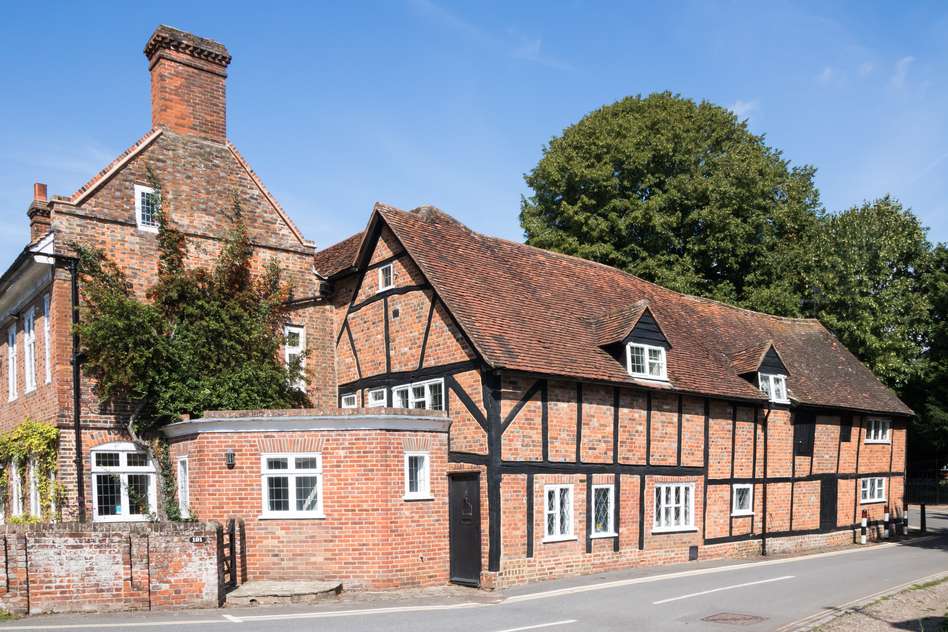Buying a listed building

Many buildings in England that were built before the Victorian era, are listed buildings, so it’s not that unusual to find yourself considering buying one. Before you take the plunge, read our guide covering what you need to know about owning a listed building.
Listed buildings are protected by law
This means owners need listed-building consent and planning consent for changes, even minor changes - and that applies to the inside, as well as the exterior. If you don’t get listed building consent before starting work, it’s a criminal, rather than a civil, offence! While this extra red tape shouldn’t put you off buying a listed building, you need to be aware of the challenges and potential extra costs involved before buying.
Additional challenges that buying a listed building brings:
- getting permission from the local authority for any changes to the building can take a long time to organise
- buying specialist insurance
- additional costs to run the building and repair it, using specialist builders and specialist materials
- modern adaptations, such as energy efficient changes like insulation or double-glazing, may not be allowed.
What is a Listed Building?
A listed building is one with special historical or architectural interest. It’s protected by the Planning (Listed Buildings and Conservation Areas) Act 1990). They are listed to preserve their special features for future generations of people to enjoy, protecting them from changes, which could damage the building, or are not ‘in-keeping’. In most cases, this covers the whole building (inside and out) plus structures attached to the building, including modern extensions. It can also include outbuildings and garden features.
Generally, listed buildings are from the 19th century or before. England has a good quantity of very old buildings and most of the ones built before 1700, that are still in the original state, are listed. Modern buildings can be listed if they are an example from a famous architect or a good example of a specific style or building technique.
Listed status is granted by the government (the department for Digital, Culture, Media and Sport) on recommendation from an independent panel of experts such as Historic England. There are approximately 400,000 listed properties in England, with three grades:
- Grade I (2.5% of listed buildings) – buildings of exceptional interest
- Grade II* (5.5% of listed buildings) – buildings of particular importance
- Grade II (92% of listed buildings) – buildings of special architectural or historic interest warranting every effort to preserve them.
The different grades carry different limitations so if you’re thinking of buying the building, it’s vital that you know which grade it falls into. Most Grade 1 buildings are owned by the government or major organisations so you will most likely be looking at Grade 2* or Grade 2.
Buying a Listed Building – a checklist of what to do
Although the buying process is the same, you will have different and multiple obligations even if you own the freehold. Never make any assumptions about what you will be able to change. Ask an expert before you buy the property.
- Find a listed building expert - the Historic England website has a guide to experts.
- Do a listed building map search if you’re viewing older properties (1900 and before) that aren’t advertised as being listed, just to make sure.
- Understand why it was listed. The National Heritage List for England will give you the date it was listed, the grade and a description of the listed building, along with the explanation as to why it was listed and the details of the restrictions which helps you understand what you won’t likely be able to change.
- Gather all the details together and make sure they’re accurate before you buy the property because you won’t be allowed to change the elements that are listed. Take particular care with extensions – the restrictions may well cover an extension as well.
- Get a specialist survey – do not skip this step! Consult with the specialist surveyor who’ll be knowledgeable about construction materials, period features, points of historical interest – their survey report will be very helpful.
- make sure you have evidence of previous consent to carry out building work. If the previous people didn’t get this, and you buy the property, it will be up to you to fix any errors; this could be extremely expensive.
- Find out if you can get a grant from organisations like Historic England to help pay for repairs. Research grants to find out more about your building may also be available.
What does the local conservation officer do?
You need to make a friend of this person! They will:
- tell you what you can and can’t alter - you will need consent from them
- help you check the planning history to see if there has been any subsequent documentation and crucially whether any unapproved changes were made in the past. If you buy the house, you could be liable for putting those right.
- explain the process which includes consultations prior to the submission, to help make it more likely you will get consent.
- help you with the large amount of detail needed, which is far more than for a planning application.
Planning a listed building renovation
You must get consent for everything. Don’t be tempted to leave some things out of your application. Take care over ‘like-for-like’ changes, for example roof tiles and windows, as the rules are complex. You may need to apply separately for every change, for example, a new conservatory, new roof space, swimming pool. Remember the process isn’t fast, so leave plenty of time.
The purpose of listed status is to preserve the building. Kitchens and bathrooms apart, you may struggle to get permission for changes. The planning experts will probably be more keen on changes that bring the building back to how it was in years gone by, when it was first built.
Talk at an early stage to the experts: tradespeople, traditional craftspeople and specialist architects. Listen to their advice because they will have done this many times and their advice will likely save you time and money.
If you get the go ahead, you’ll have to pay a listed building consent fee, the cost of which depends on the scale of your renovations.
Modifying a listed building
You will be allowed to change some things and in fact some changes may be necessary to keep it watertight and in good repair. Common modifications for which you should get consent include:
- new roof: take particular care with the style and materials used for roof tiles.
- internal layout: altering floorplans by taking down internal walls or remove internal features; even though they are inside.
- extensions: these are more likely to get the go ahead if they are smaller than the original building and/or if it’s in the same style, using similar materials.
- windows: these have a major impact on the overall look of the building so replacing windows with similar traditional materials tends to get approval more easily. Double glazing can be a problem because it often doesn’t look in keeping, but there are alternatives such as secondary glazing leaving the original windows in place.
- period features: fireplaces, cornicing, tiles, floorboards, windows – these sorts of features are likely to need preserving, whether or not you are particularly fond of them.
- decorating: your personal taste does not have free rein! You may have to use certain paints or colours or styles to maintain the building’s character. Existing decor, if it contributes to the specialness of the building, will have to stay and be preserved.
- exposing brickwork or timber: revealing the building’s original features also needs consent.
Older buildings can be in poor condition
Due to their age, even if they have been looked after, old buildings struggle to compete with modern houses when it comes to things like energy efficiency and keeping out the cold. Four things to look out for when assessing your prospective new home are:
- Damp: many older buildings have it because they were built differently; they were built to ‘breathe’ and not built to be airtight. Make sure the roof at least is sound.
- Plumbing: poor plumbing will be common and getting that sorted should be a priority to avoid disasters like burst pipes.
- Electrics: similar to plumbing, the electrics could be ancient and therefore dangerous. The building regulations on electrics are strict and it’s likely you will need to spend money here. Poor electrics and timber-framed or thatched houses are not a good mix, so you’ll need budget to get the wiring done first.
- Draughts: you’re unlikely to win any energy efficiency awards. Ill-fitting windows, gaps in floorboards and poor or non-existent insulation all make for a chilly house. Getting that stuff fixed will all need consent.
Listed building insurance
You will need more than a standard policy. Get a specialist insurance policy that does the following:
- takes into account the higher cost of specialist tradespeople
- covers you for any unauthorised changes that were made by previous owners that may come to light. You will be liable for those even though there were nothing to do with you
- covers the elevated costs of rebuilding in the event of a disaster such as a fire. Organisations such as English Heritage will want it returned to its original state and what that costs is not their worry!
While your insurance policy may be more costly than for a three-bed semi, the peace of mind it brings will be invaluable.
Should I buy a listed building?
Don’t let listed status put you off. If you go ahead, you will become the owners of a beautiful home that stands out from the crowd, is brimming with character and will likely retain its value well, all other things considered. Just make sure you take care with every detailed step. Having an expert conveyancer on your side is always a good idea, so you can rest easy knowing nothing has been overlooked.
Tees is here to help
Our specialist lawyers are based in:
- Cambridgeshire: Cambridge
- Essex: Brentwood, Chelmsford, and Saffron Walden
- Hertfordshire: Bishop's Stortford and Royston
But we can help you wherever you are in England and Wales.
Chat to the Author, Anne Elliss
Executive Partner, Residential Property, Brentwood office
Meet Anne
- Areas of expertise
